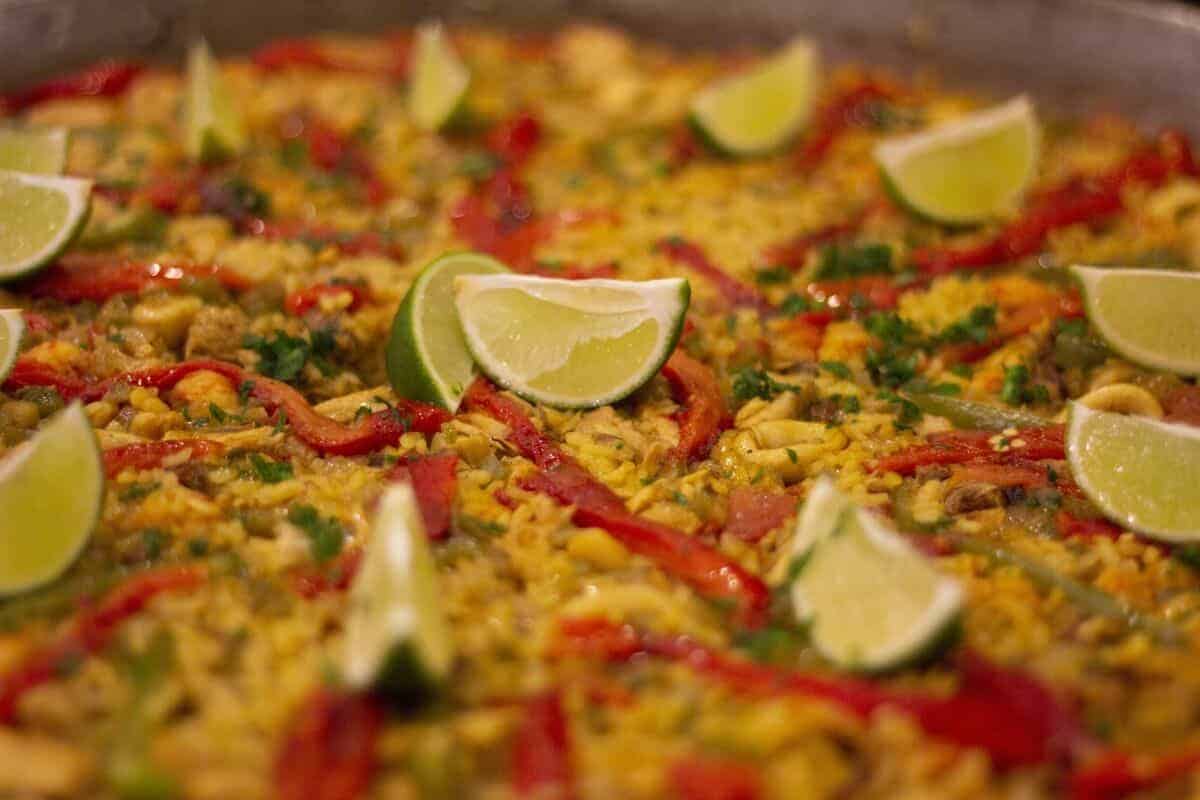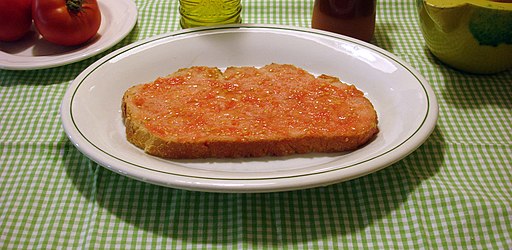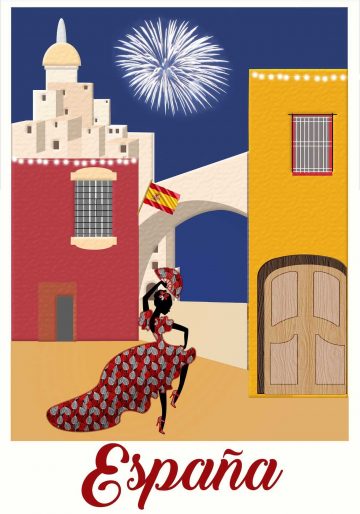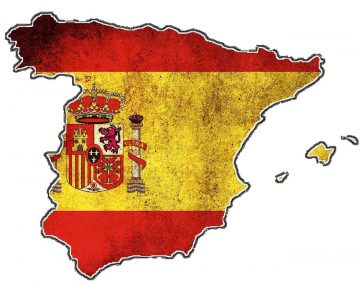As with every other place in the world, you can learn a lot about Spain by trying its cuisine. Not only does it offer a wide range of options, but its cuisine is also a testament to all the historical processes Spain has been part of. What’s best about it is that many dishes incorporate old and new traditions!
Since Spanish cuisine is so extensive, we’re going to explore it through the different regions of Spain. In this post, you’ll read about Aragón, Cataluña, Valencia, Murcia, Andalucia and the Balearic Islands.
Don’t forget to visit also our food section where you’ll find restaurant guides and more!
A little context
Before the Roman Empire, Spain was divided in three: Celts (north) that fished and farmed for a living, Iberians (center east) that appreciated great quality in meat, and the Tartessos (south) that did a lot of trading with Africa and Greece.
During the Roman Empire, the wine culture was introduced in Spain and also the use of olive oil (Spain is the largest producer of it in the world!). Then, when the Muslim troops invaded Spanish regions (in 711 AD) new ingredients were introduced in the Spanish cuisine coming from places like Persia and India.
The conquest of American territories by Spain in 1492 also provided Spanish cuisine with new and exciting ingredients like tomatoes, potatoes, vanilla, and chocolate.
Fun fact: Spain was the first place where chocolate was mixed with sugar to remove its bitterness.
Keep this information in mind, since many of the ingredients and traditions from these historical happenings still influence Spanish cuisine. Of course, Spanish cuisine keeps evolving and adapts to new trends. That’s the reason you can find great vegetarian options in places like Madrid and Barcelona.
Aragón
What you should know
Its origin is rural and mountainous so legumes are a very important part of it. It’s a place where lambs are raised so it’s an important ingredient in its cuisine. Use of pork is also popular. Its most notable condiment is garlic oil.
Staple dish
Asado de ternasco (roast lamb), it’s cooked with garlic, salt and bacon fat.
Other dishes you should try
- Pork dishes: magras with tomato and roasted pork leg.
- Made with bread: migas de Pastor, migas con chocolate, Regañaos (kinda like a pizza but with sardines or herring), and goguera (empanada with meat).
- Snacks: frutas de Aragón (candied fruits), Maraschino cherries, ham from Teruel and Huesca, and Tronchon cheese.
Balearic Islands
What you should know
Purely Mediterranean characteristics… couldn’t be another way! Since these islands have been conquered several times by the French and English, its cuisine has some of those cuisines characteristics. Olive oil, legumes, unrefined cereals, fruits, vegetables, and fish are of great importance to Balearic cuisine.
Staple dish
Try the Sobrassada. It’s a sausage made with Black Majorcan pig. The production of these sausages is also part of festivals and rites in Majorca and Ibiza.
Other dishes you should try
- Classics: arròs brut (rice, meat, and vegetables), tumbet (potatoes, aubergines, and red bell peppers fried in olive oil), roasted suckling pig, and frit mallorquí (pork, lamb, goat or turkey with potato, onion, tomato and red pepper).
- Cheeses: mahón cheese
- Desserts: ensaïmada (lard-based with sugar), flaó (cottage cheese tart), and crespels.
- Drinks: Gin de Menorca
Andalusia
What you should know
This region uses the most olive oil in its cuisine. It mostly has two types of cuisine: rural and coastal.
Staple dish
Gazpacho, a cold soup made with 5 vegetables, vinegar, olive oil, and stale breadcrumbs.
Other dishes you should try
- Meat dishes: flamenquín, pringá, oxtail stew and Menudo Gitano (or Andalusian tripe)
- Soups: cat soup (not made of a cat but with bread), dog stew (not made of dog but with fish with orange juice) and Migas Canas.
- Fish dishes: fried fish and cod pavías.
- Desayuno Andaluz: a traditional light breakfast that includes bread with olive oil or Manteca colorá (lard with paprika) with tomato and salt, churros, milk, orange juice, and coffee.
- Drinks: anise, wine, and sherry brandy.
- Snacks: Serrano Ham, Iberico Ham, and snacks made with olives.
Cataluña
What you should know
Based in rural culture. Because of its geography, it has three different types of cuisines: seafood, mountain, and interior. If you want to be able to try a mix of the three of those, go to Barcelona.
Fun fact: Cataluña is where the first Spanish cookbook was written!
Staple dish
Escudella i carn d’olla. This soup is made with a pilota (a big meatball with garlic and parsley) and different vegetables depending on the season. It may also use sausages and other types of meat. When trying escudella, first you’ll have the soup (without the pilota and vegetables) and then you’ll be served the pilota and vegetables.
Other dishes you should try
Entrées: caracoles en salsa (snails in sauce), pa amb tomàquet (bread with tomato)
- Sausages: butifarra, fuet de Vich, espetec, and secallona
- Meat dishes: butifarra with white beans, vedella amb bolets (lamb with mushrooms)
- Fish dishes: mandonguilles amb sipia (meatballs with cuttlefish), grilled cod with alioli, suquet de peix (fish soup with vegetables)
- Mar i muntaya: a preparation with rabbit or chicken with seafood.
- Desserts: mel i mató (cheese with honey), postre de músico (dried fruits with muscatel), buñuelos (fried dough balls with sugar), neulas (a biscuit).
Murcia
What you should know
Influenced by Manchego, Valencia, and Granada cuisines, Murcia is also famous for its fruit production. Tomato and bell pepper are basic ingredients of this cuisine. Murcia has 8 products that have denominación de origen (similar to French appellations).
Staple dish
Gachas migas or gachasmigas. A typical dish for when it rains (which is not very common in this region). It’s made of dough turned into migas (crumbs) with sausages, and ñora (a pepper from Murcia).
Other dishes you should try
- Comfort food: zarangollo (scrambled eggs with onion and courgette), and ensalada huertana (salad with tomato, tuna, boiled egg, olives, and onion).
- Meat and fish dishes: rice with costillejas (ribs), caldero (rice with rockfish), paella huertana, roasted lamb head (typical on Christmas Eve), and octopus (cooked in an oven with white wine and beer).
- Sausages: morcón, morcilla, and longaniza.
- Drinks: orange and tangerine juice, café asiático (coffee with licor 43, cognac and condensed milk), láguena or revuelto (anise with sweet wine), reparo (cognac with sweet wine), and mantellina (anise paloma, water, honey, and lemon).
- Desserts: paparajotes (made with lemon tree leaves coated with a sugary and crispy batter on the outside if you want to eat them like a local just eat the batter and leave the leaf), pastel de cierva (something like a meat cake that actually has Roman origins).
Valencia
What you should know
It mostly divides in two: rural and coastal. The rural cuisine uses more vegetables and meat, and the coastal more seafood. What they have in common is the use of rice. Basic ingredients of this cuisine are olive oil, vegetables, and fish.
Staple dish
Paella, rice cooked in a big circular pan with vegetables and meats. It can use rabbit and chicken but there are also seafood versions.
Other dishes you should try
- Rice dishes: arroz con costra (rice cooked with egg), arròs negre, and fideuá (similar to paella but instead of rice, it uses pasta).
- Meat and Fish dishes: all i pebre (fish stew), ollas or olletas (bones, rice, pork, morcilla and legumes), salazones (salt-cured meat or fish).
- Desserts: turrones (made of almonds), arnadí (a kind of pie made with pumpkin and sugar), and horchata (water, sugar, and chufas).
- Drinks: agua de Valencia (vodka, gin, sugar, orange juice, and white wine)
I don’t know about you but my mouth watered just by writing this. Have a great time trying Spanish cuisine!
Also, read the part number two and part number three of this guide.










